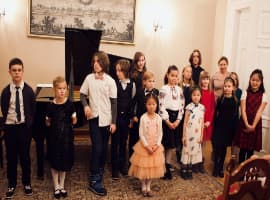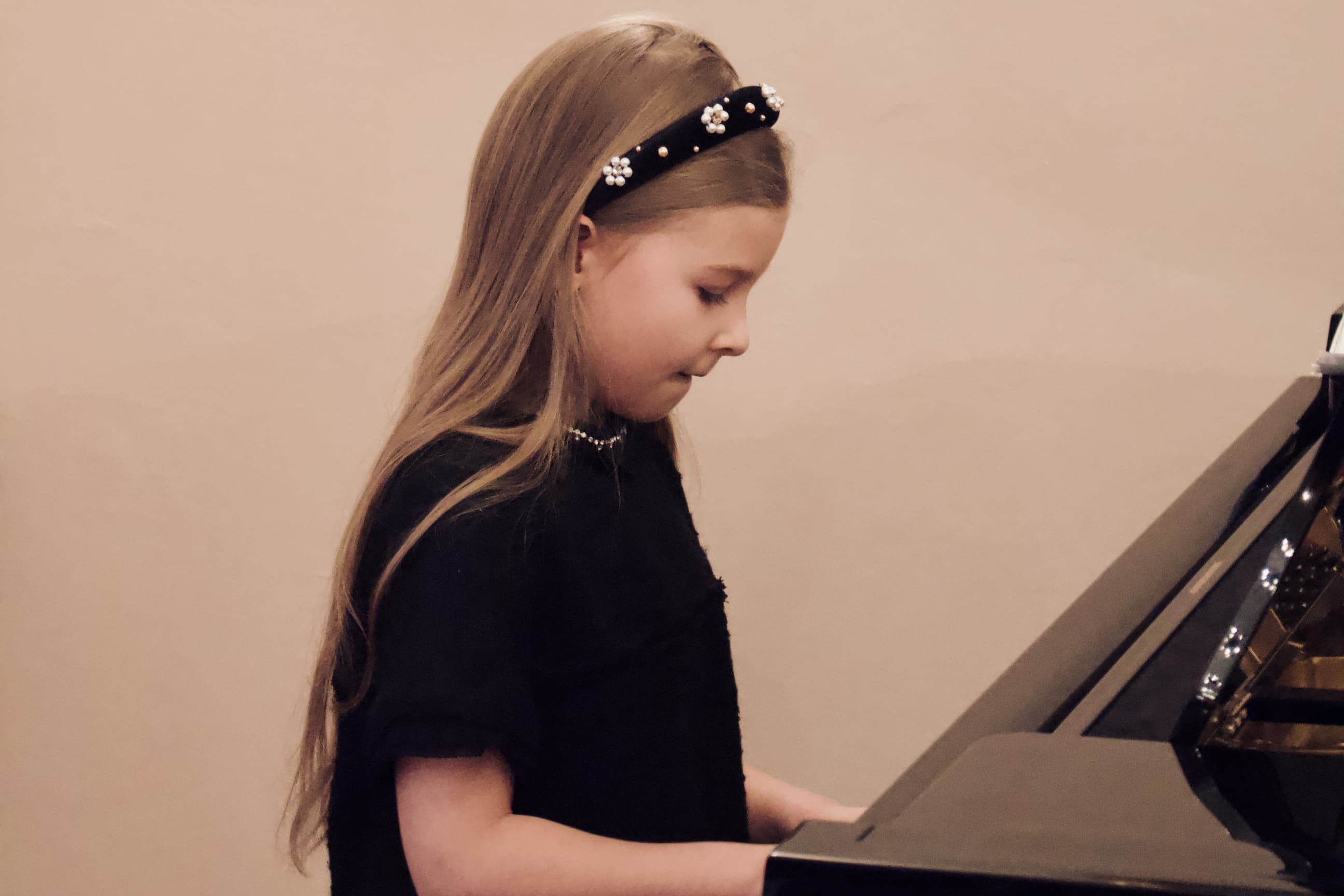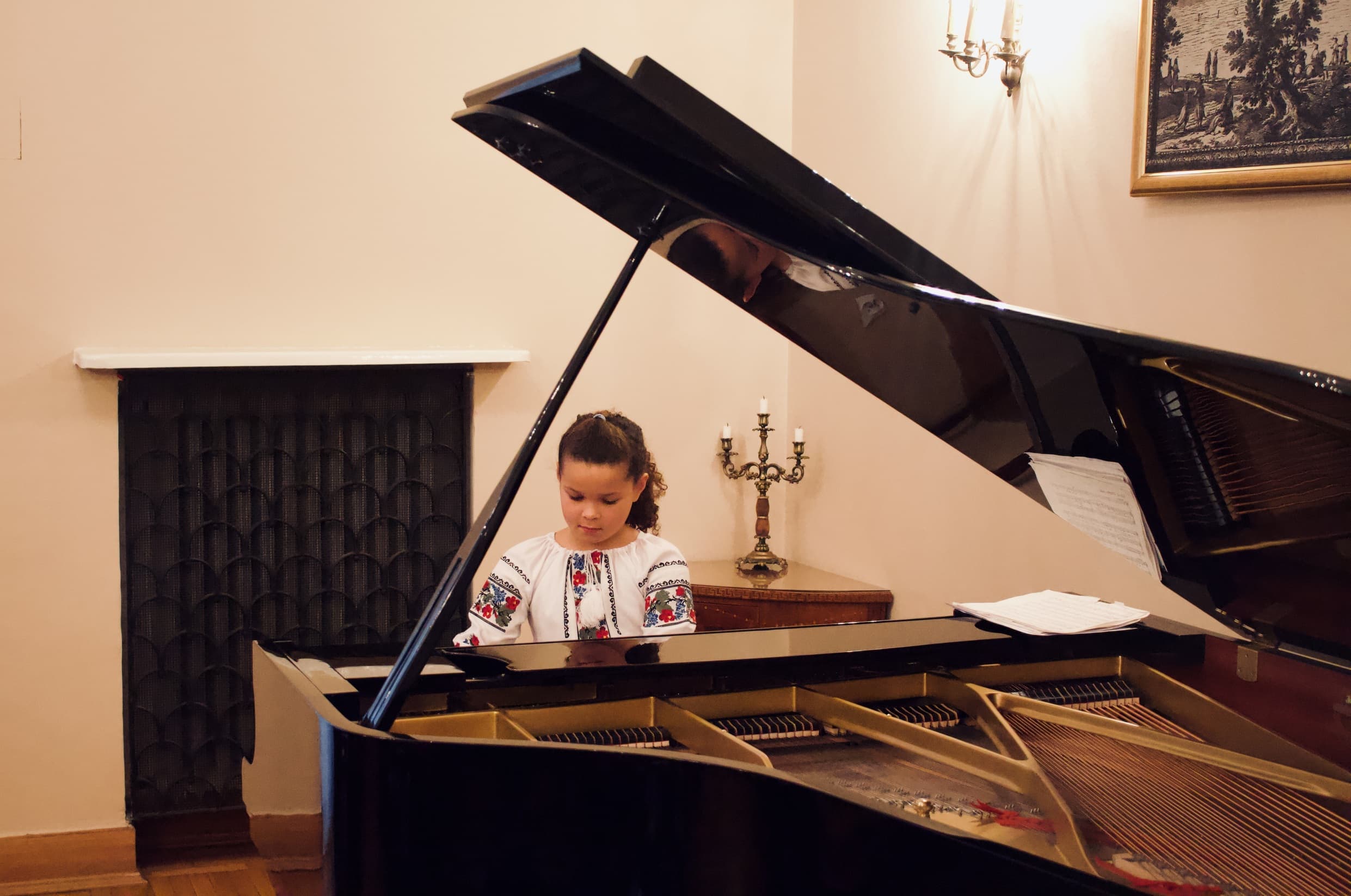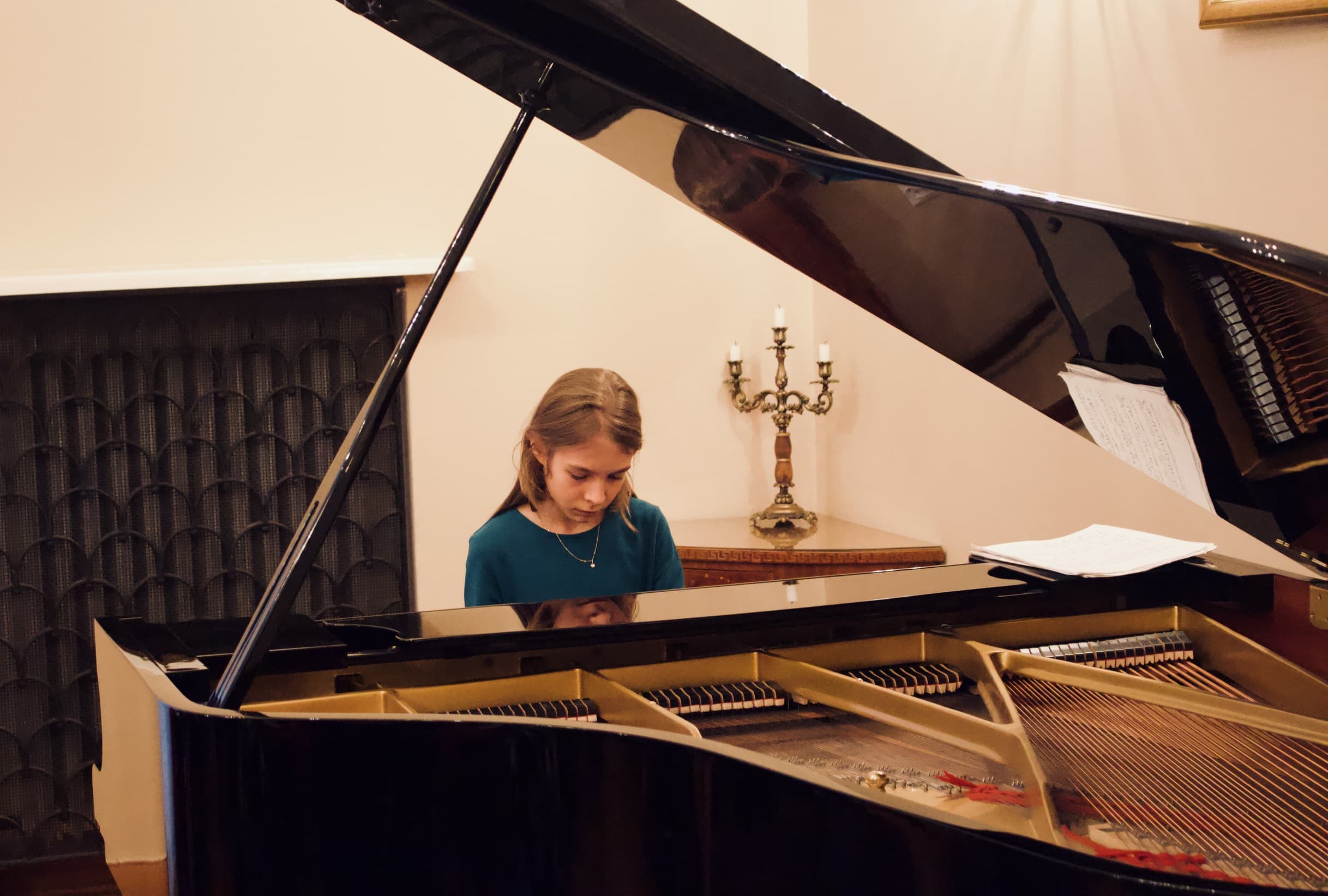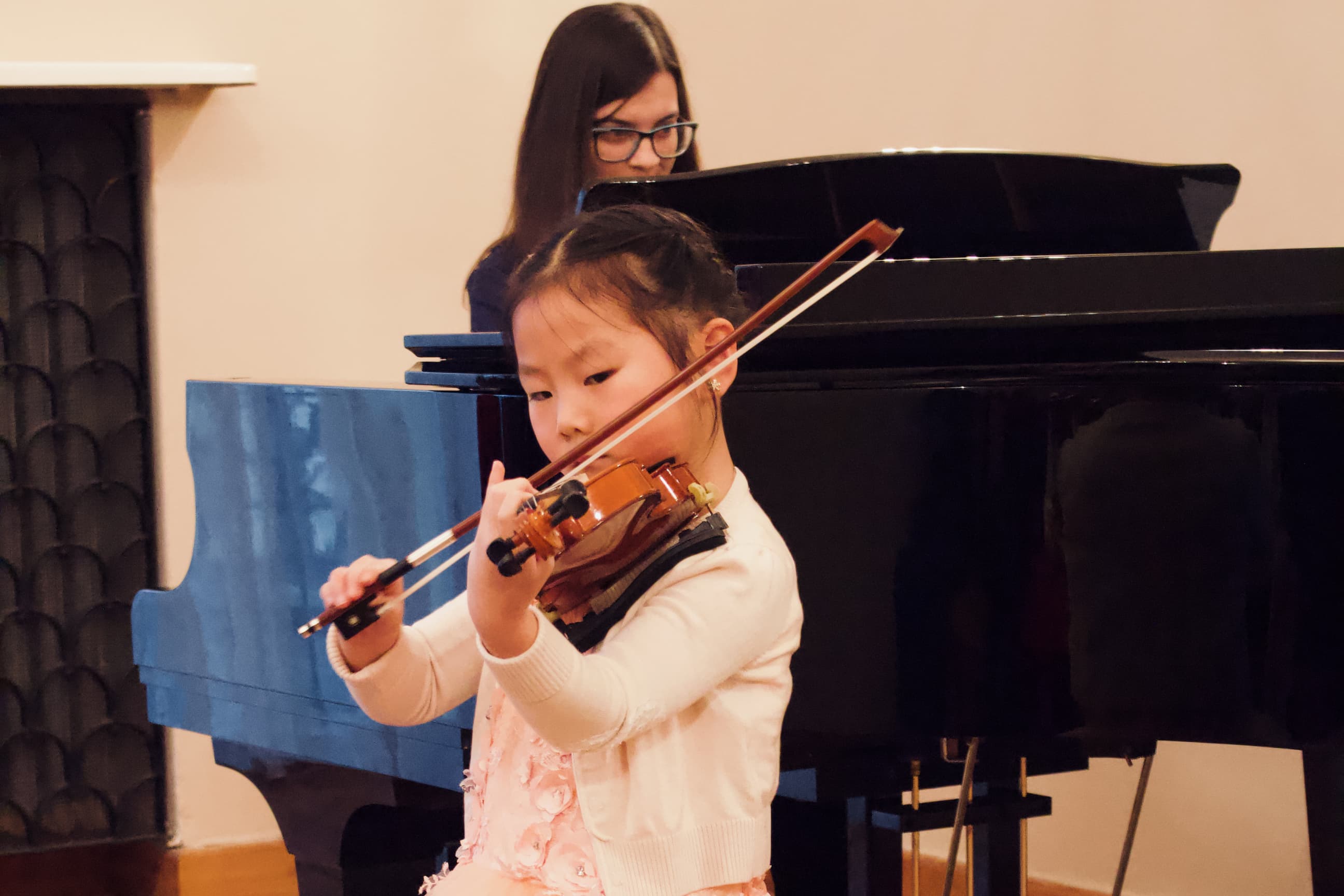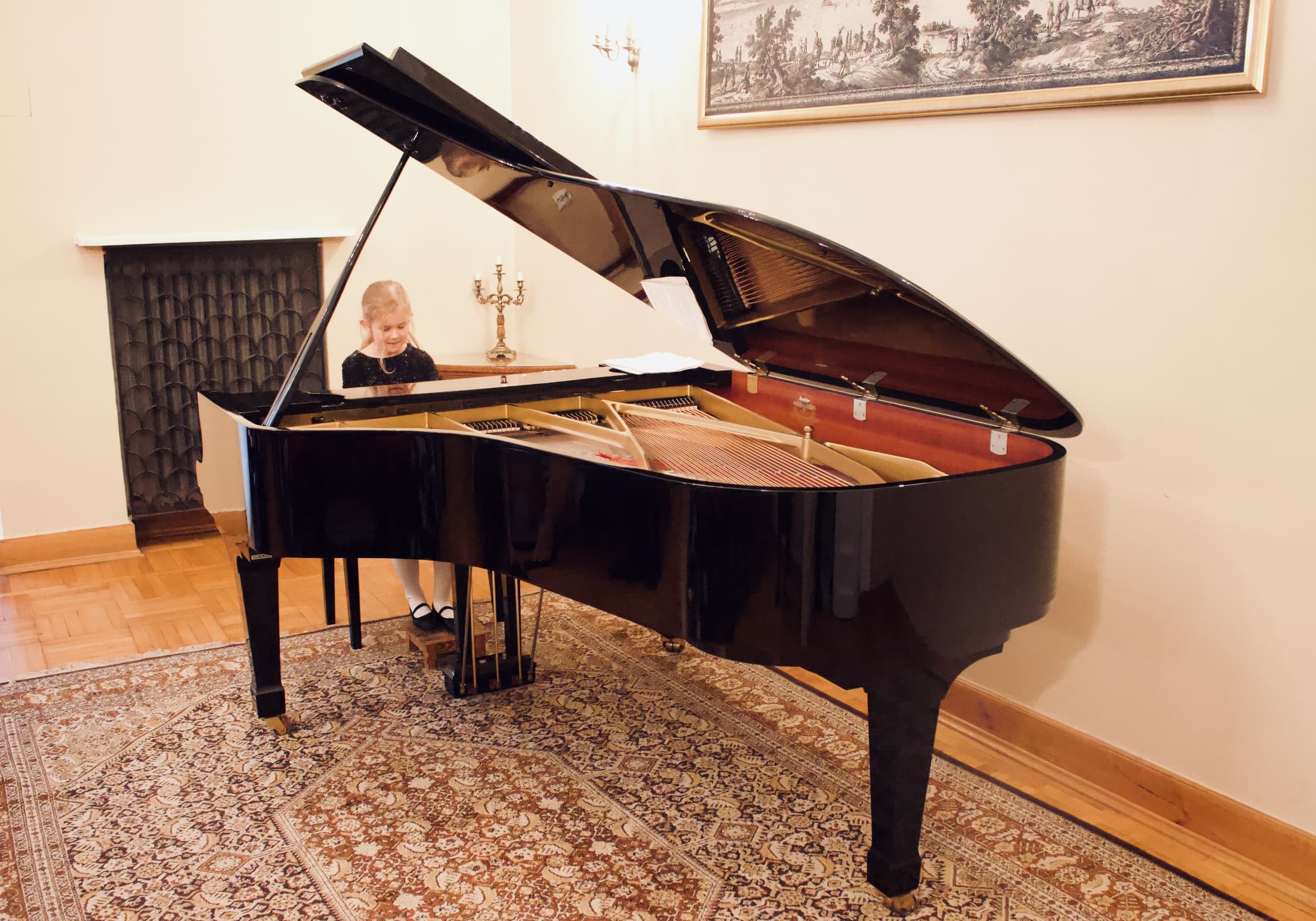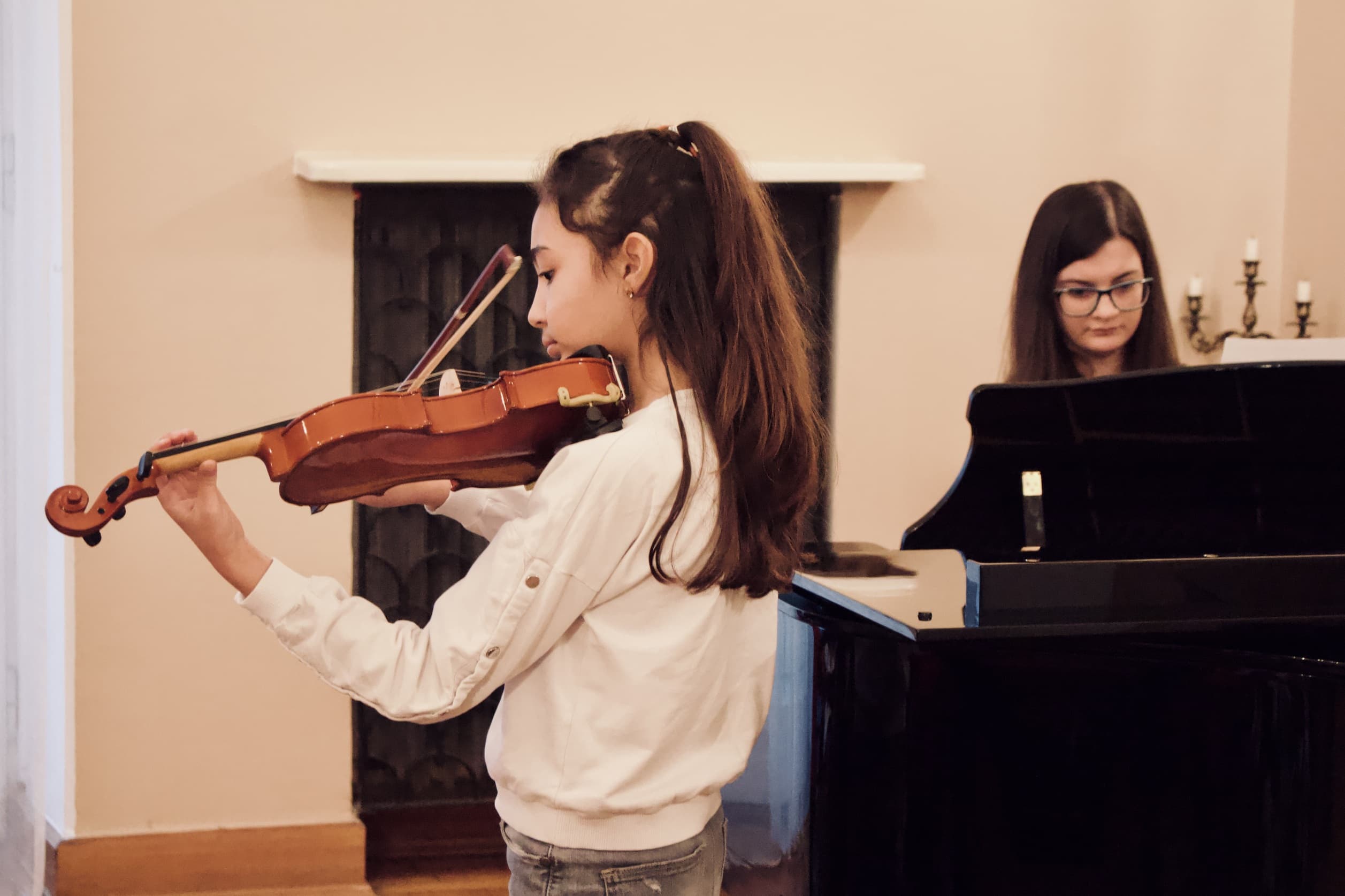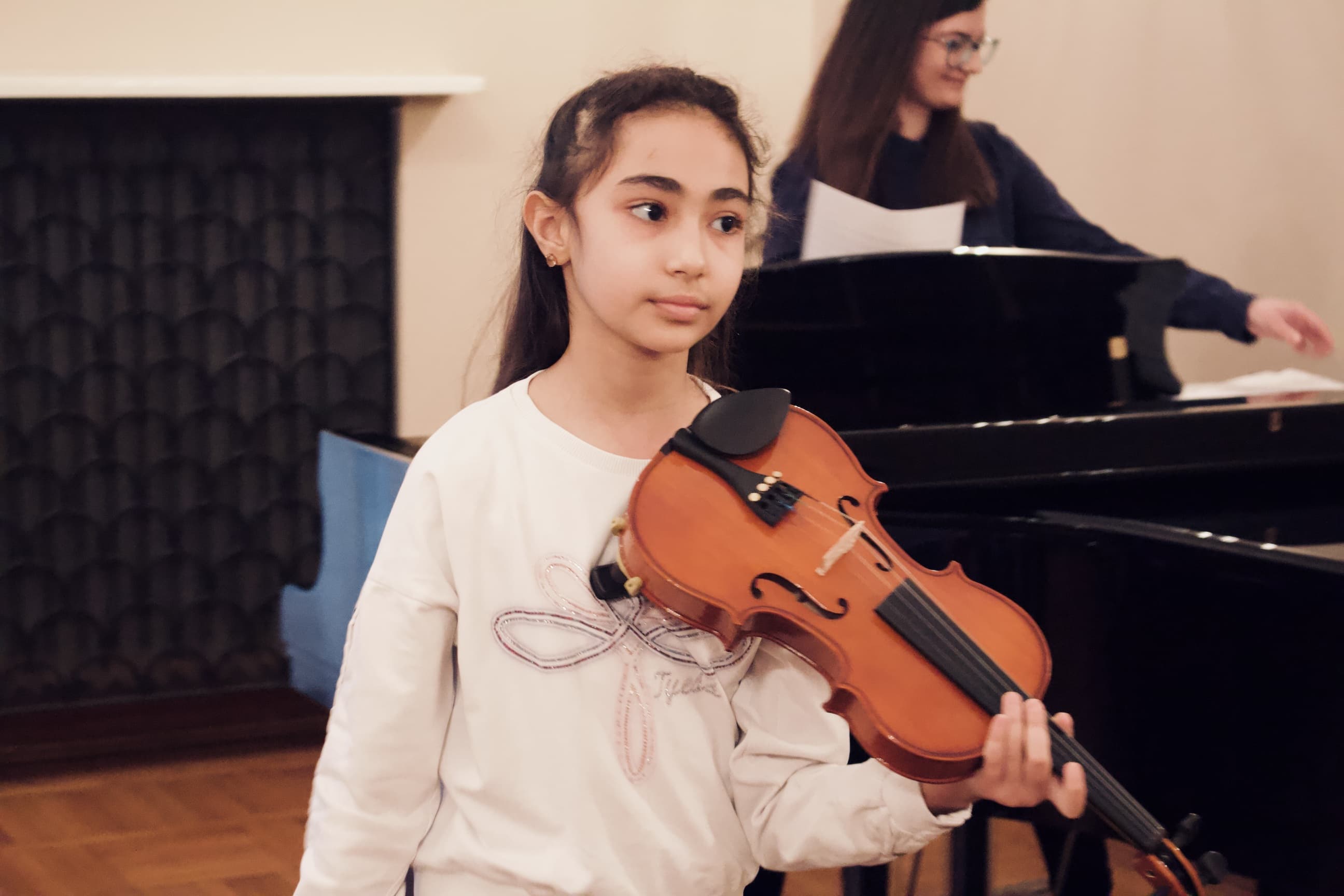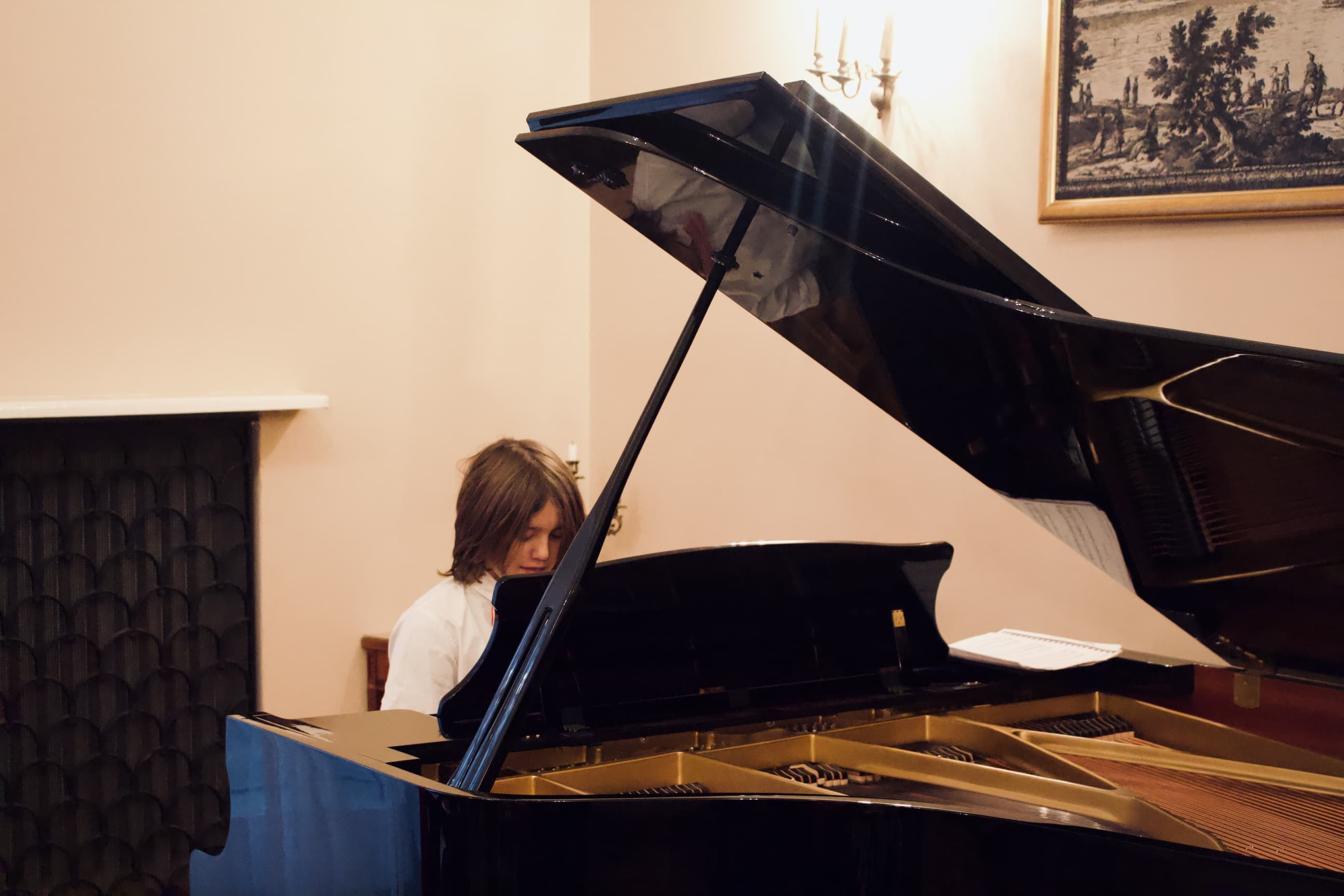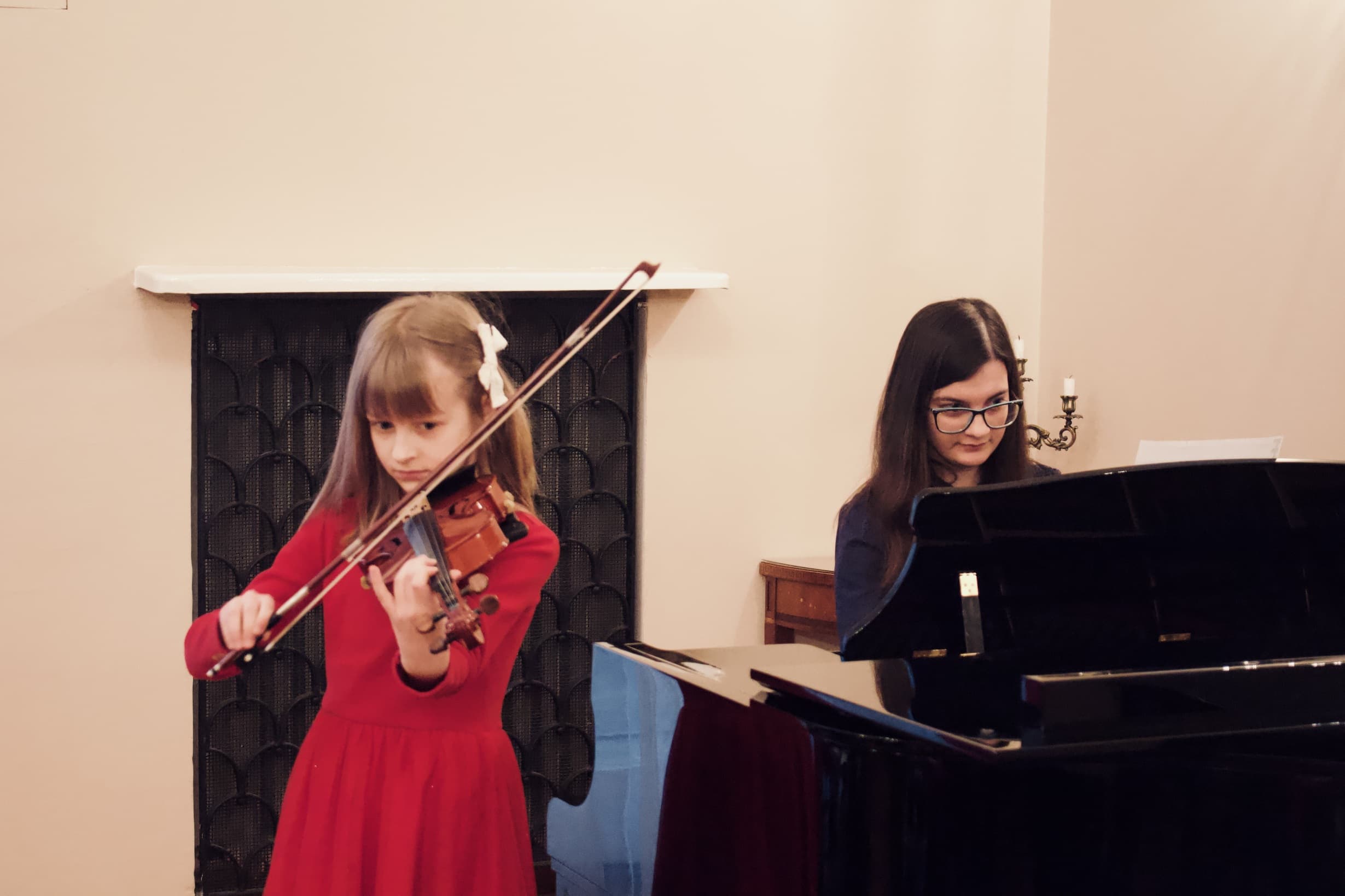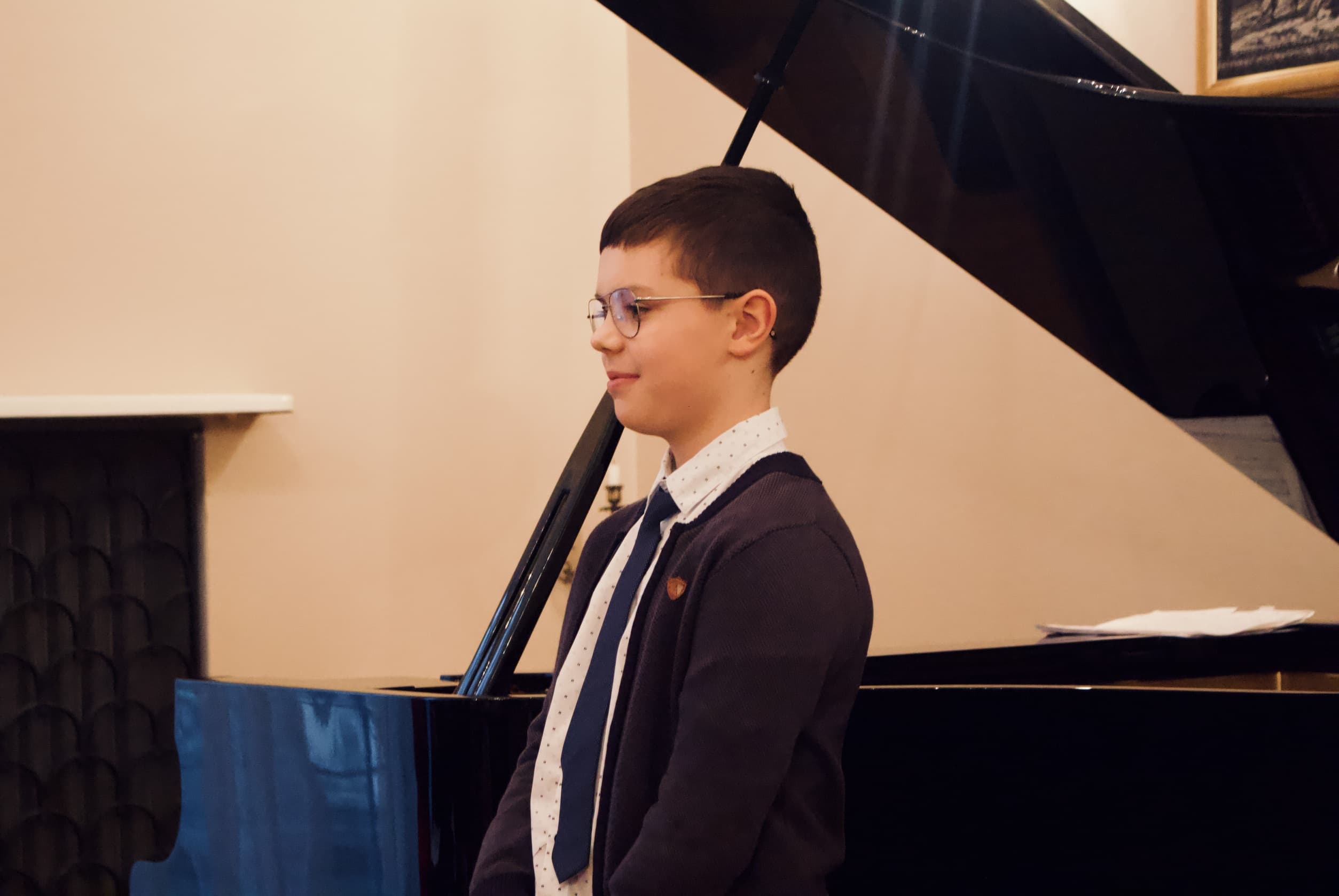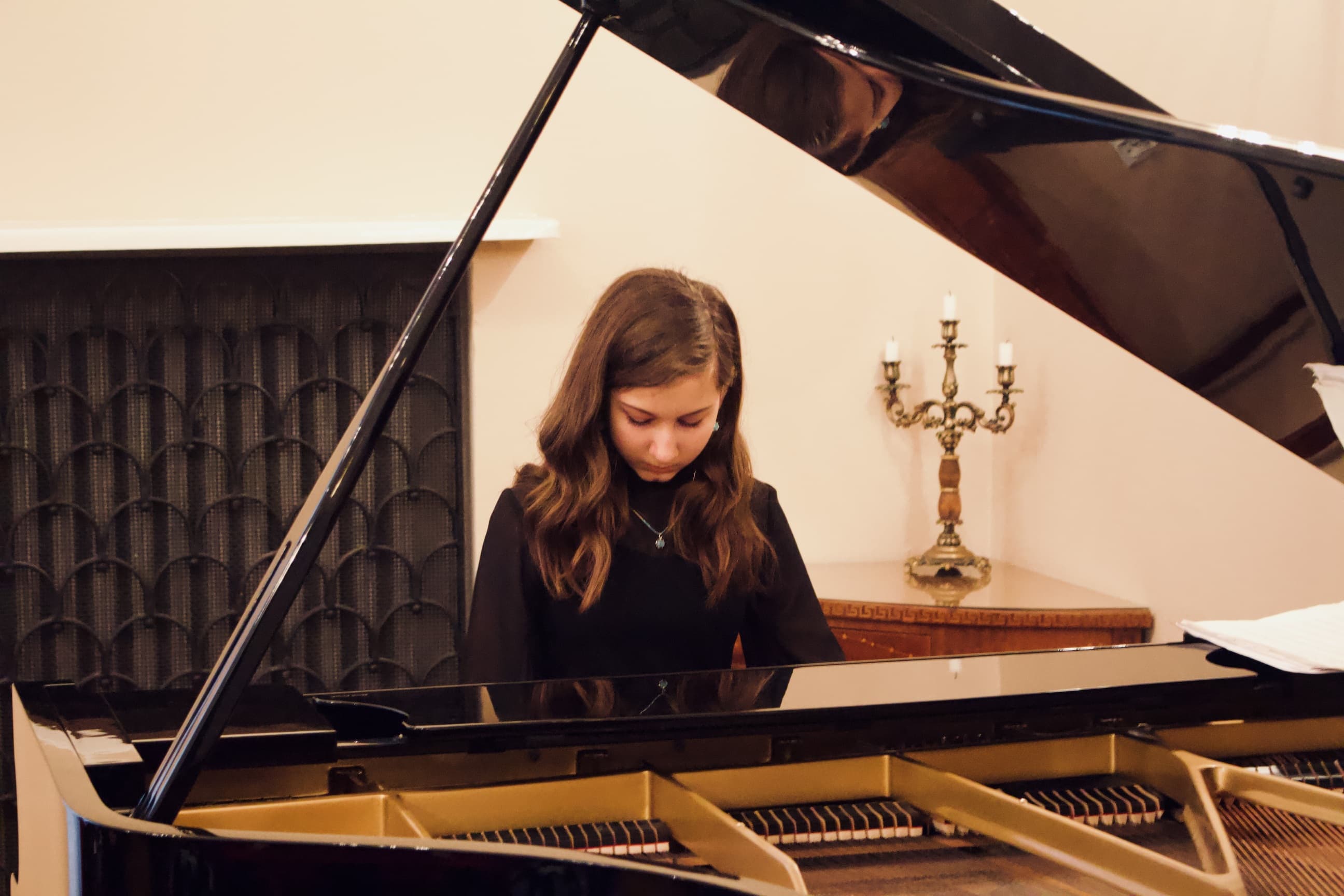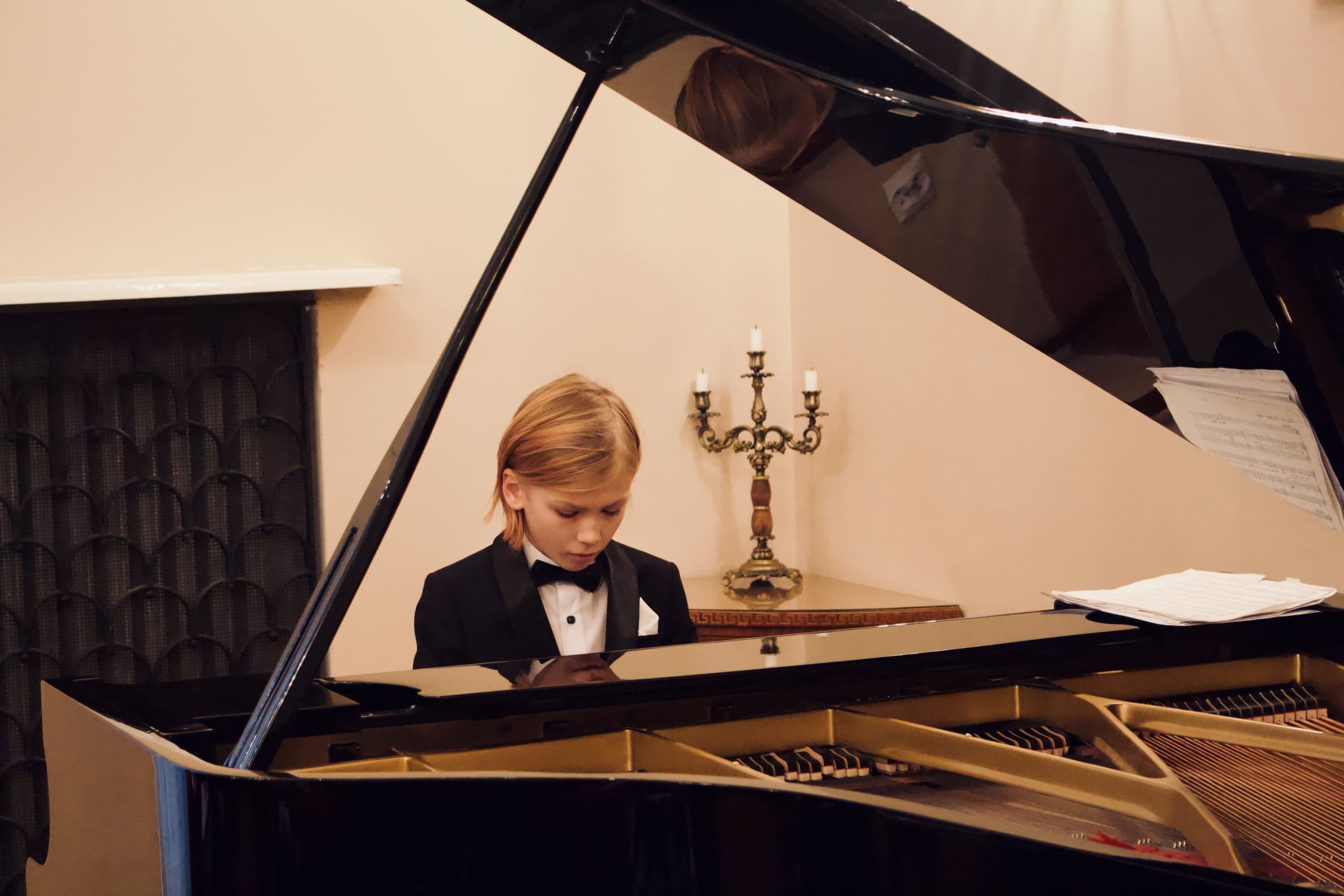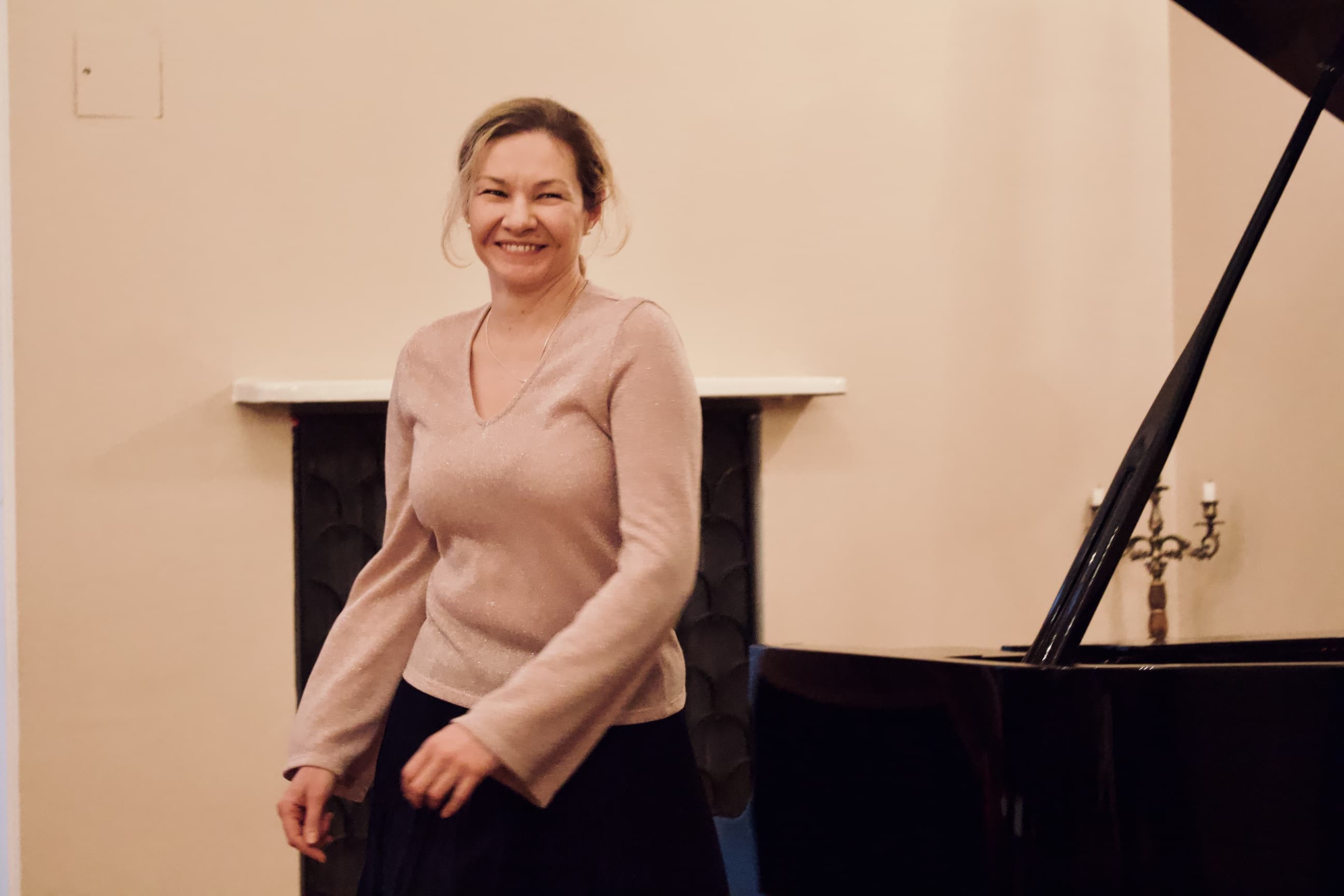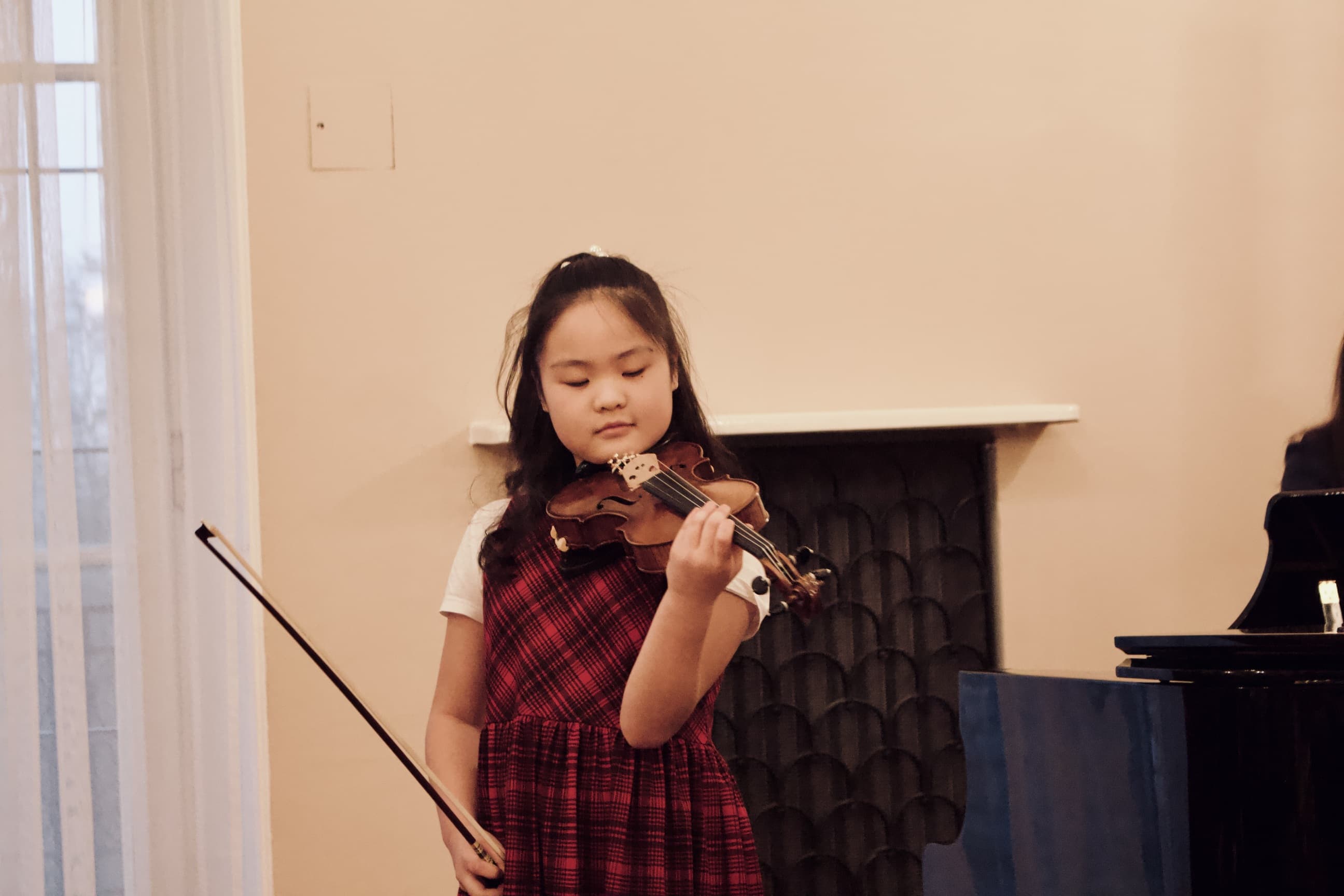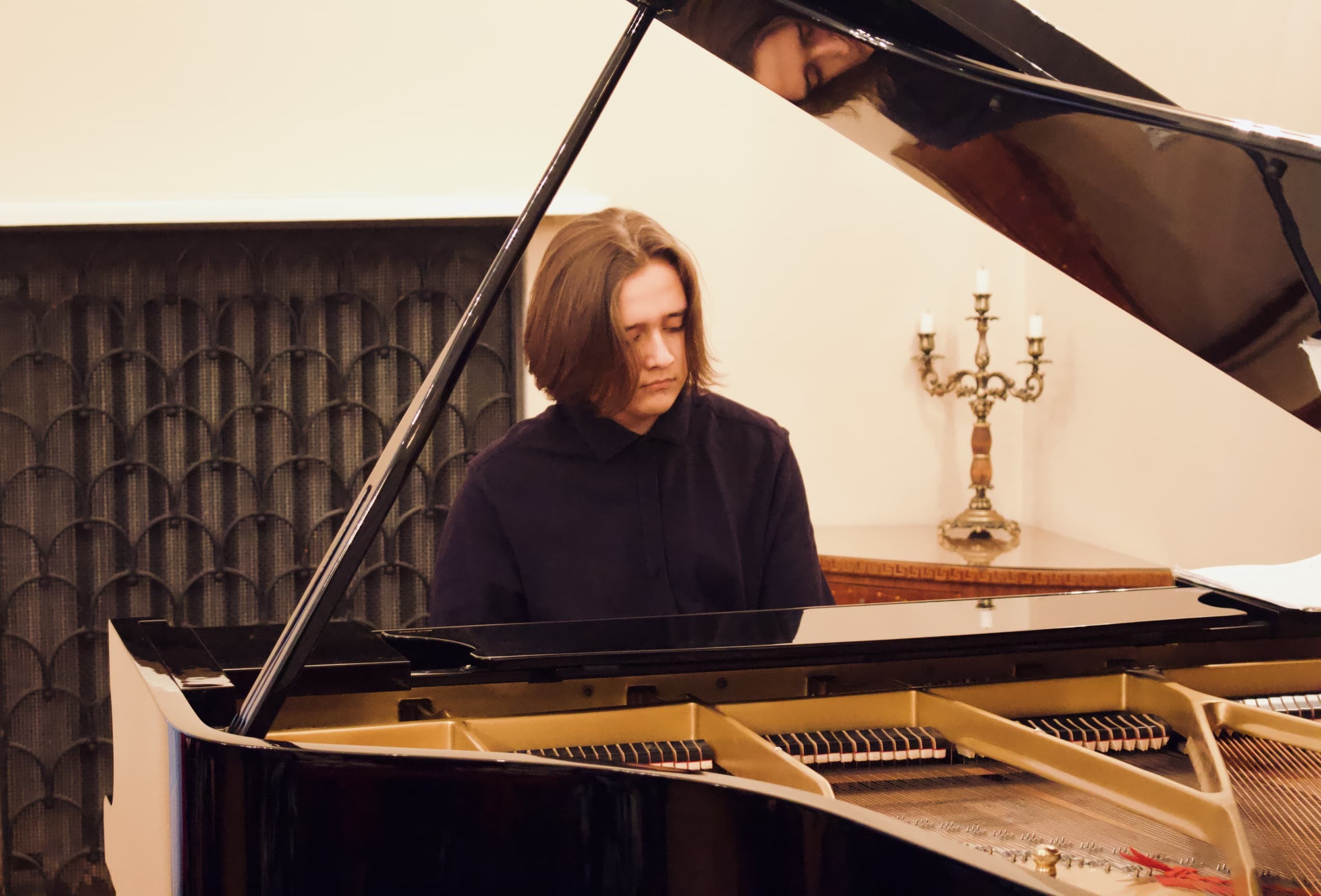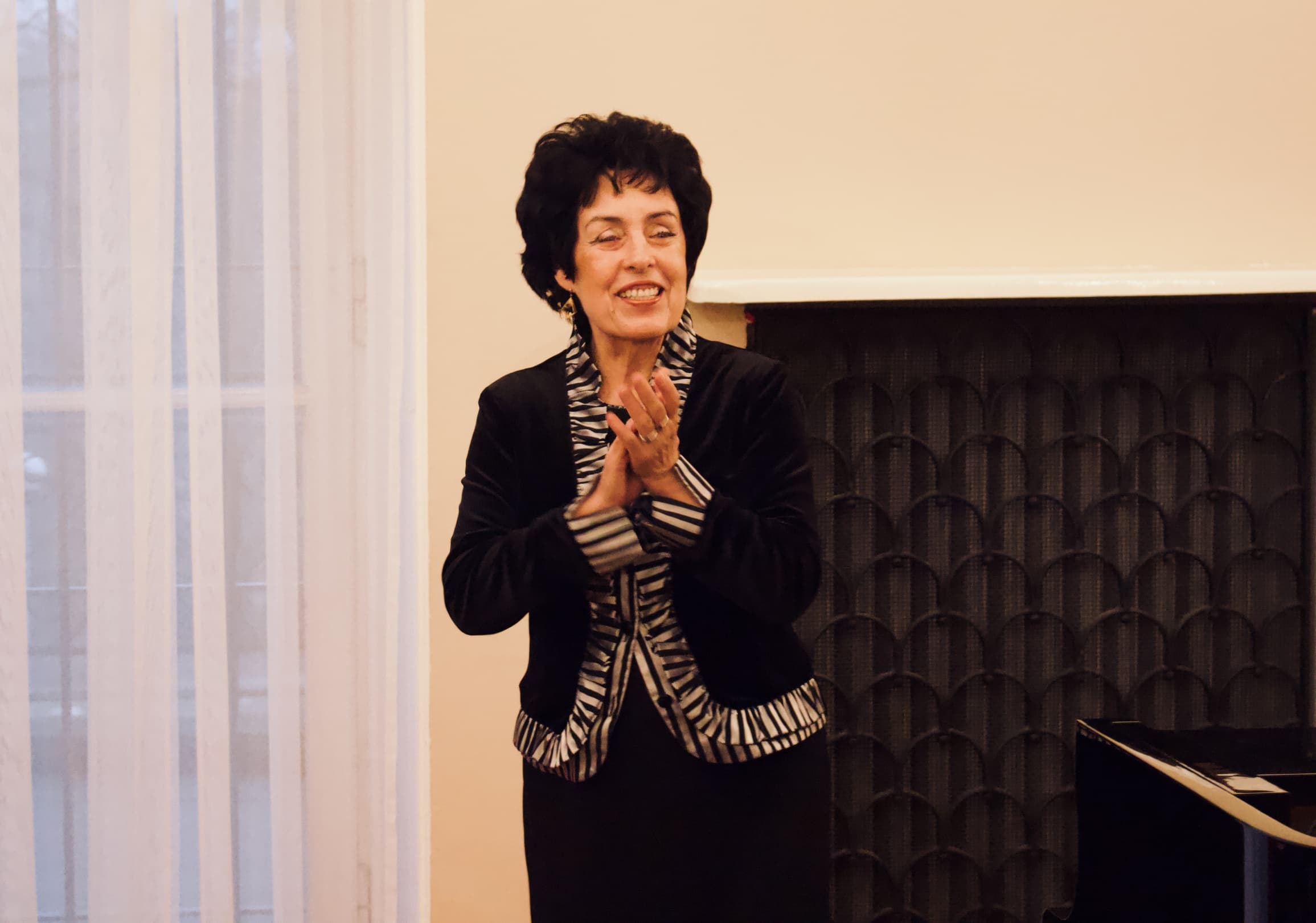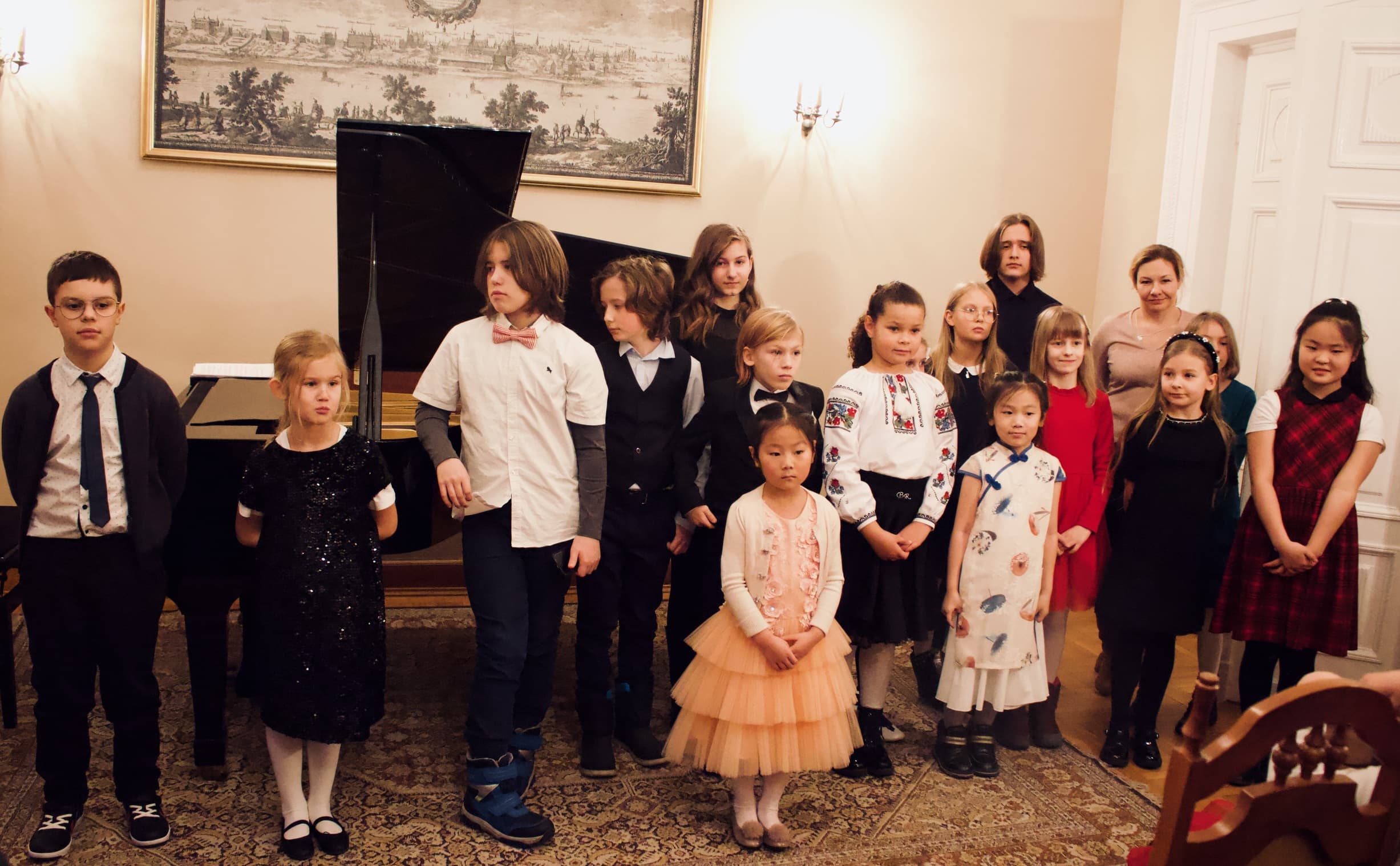The Carol Concert 2023, which everyone had been waiting for, took place on Sunday, 29 January 2023 at the Szustra Palace. Opening the concert, director Zofia Zwolińska recalled the traditions of Polish carols. She mentioned that among all countries, Poland can boast the greatest number of them. There are as many as 600 pastorals and carols, and the oldest of them – “Zdrów Be Król Anielski” – dates back to the 12th century. It was recorded two centuries later by the Franciscan Mikołaj from Koźle. At the beginning of the 16th century, the carol “Anioł Pasterzom mówił”, which is still sung today, was recorded.
Adam Mickiewicz said of the collection of canticles (as carols were formerly called) that it was the first nucleus of Polish poetry. The last carol was written in 1939 and is a moving testimony to the tragedy of the Second World War (‘Nie było miejsce dla Ciebie’).
Zofia Zwolińska handed over the conduct of the concert to Liza Pietraga, who announced the first soloist Chu Chu from Piotr Nermer’s class. Chuchu played a song from the repertoire of Russian violin pedagogy entitled ‘The Hunter’.
Also performing from Piotr Nermer’s violin class was Defne Kucukkara with a song entitled ‘Cockerel’ from the repertoire of Russian violin pedagogy.
Performances by our students
There are many reasons why we can be proud of our students performing in school concerts. First and foremost, performing in public requires our young people to have confidence, commitment and effort, which is extremely important for their personal development. These performances also enable them to develop artistic skills such as playing an instrument, singing, dancing, reciting or acting, which can benefit them throughout their lives.
In addition, school performances give students the opportunity to have an audience that listens to and admires their work, which in turn can boost their self-esteem and motivation to continue working. Such experiences, in turn, can have a positive impact on their emotional and social development, as well as teaching them respect for others and teamwork.
Concerts are also an opportunity to celebrate the achievements of our pupils together with the whole school and local community. They allow us to express our appreciation and gratitude for the effort they have put into preparing their performance, as well as integrate as a school community.
Yulia Lewiuk’s piano class was represented by:
- Roma Fiderkiewicz, who performed the carol “Jesus Little Jesus”
- Jeremi Filar performed the carol “Come to Bethlehem”,
- Eliza Angevin performed a Minuet by Johann Sebastian Bach
- Katarzyna Sobka performed the carol “Jesus Little Jesus”
- Basia Sobka performed “Little Study” by Robert Schumann
From Hanna Malaszek’s piano class, the following performed:
- Jakub Grzyb with Janina Garcia’s miniature ‘Grandfather Frost’ and the carol ‘Jesus the Little One’
- Emil Kozieł performed Justin Hurwitz :”Mia and Sebastian’s Theme”
Students of Zofia Zwolińska’s violin class:
- Jadzia Wichary with ‘Lullaby’, a miniature from Russian violin pedagogy.
- Tosia Rytel played the carol ‘When Christ is born’.
- Hanyu Lang performed the first movement of Antonio Vivaldi’s Concerto in A minor.
They represented the piano class of Edith Plodzien-Marmur:
- Zosia Pobereszko, who played the carol “Come to Bethlehem”
- Leonard Stelmach with the carol “Among the night silence”.
From the piano class of Inna Harasimowicz, we heard:
- Zoriana Poladko Alleyene in “Jingle bells”
- Kan Kan in Polka by Wiliam
- Jasio Piwoński, whose performance concluded the Carol Concert
Concluding the concert
After the concert, the Head of School congratulated the soloists and teachers for such a very successful outcome of their work on the concert repertoire. She gave special thanks to the Parents and Grandparents for their efforts in caring for their children’s instrument work at home and invited them to the Spring Concert to be held on Saturday, 22nd April 2023 in the hospitable rooms of Szustra Palace. Another carol concert in the history of our institution was an opportunity to showcase the skills of our students.
Exceptional carol concerts
Carol concerts are our annual tradition. Carols are usually associated with the Christmas season, which is a very important and symbolic time for many people around the world. A carol performance can therefore bring much joy and emotion, as well as highlighting the values represented by this period, such as family, love, generosity and peace. Carols are often beautifully arranged and written, meaning that they can be true masterpieces of music. Performing them live by talented musicians or vocalists can bring great excitement and admiration from the audience.
Legacy of Antonio Vivaldi
We take great pride in our students performing classical repertoire.. During carols concert Hanyu Lang performed the first movement of Antonio Vivaldi’s Concerto in A minor. The legacy of this great composer is far-reaching and significant. He was one of the most important composers of the Baroque era and his music continues to be widely performed and appreciated today. Vivaldi was a trailblazer in the development of instrumental music, particularly the concerto form. He wrote over 500 concertos in his lifetime, including many for solo violin, which helped to establish the violin as a leading instrument in the Baroque period.
Concerto in A minor, RV 522
Antonio Vivaldi composed several concertos in A minor, including the famous “Concerto for Two Violins in A minor, RV 522”. This concerto is part of a collection of twelve concertos called “L’estro armonico” (The Harmonic Inspiration), which Vivaldi published in 1711.
The “Concerto for Two Violins in A minor, RV 522” is one of Vivaldi’s most popular works and is frequently performed today. It is a three-movement concerto, with the first and third movements in a fast tempo and the second movement in a slower tempo. The piece is characterized by Vivaldi’s trademark virtuosic violin writing, with both soloists taking turns playing rapid runs and intricate melodies.
The opening movement of the concerto features a lively, driving rhythm and a memorable theme that is passed back and forth between the two solo violins. The second movement is a beautiful and lyrical piece, with the violins playing a duet over a gentle, flowing accompaniment. The final movement is a high-energy tour de force, with the two violins engaging in a thrilling musical dialogue that builds to a thrilling conclusion.
Influence of Antoni Vivaldi
Antonio Vivaldi’s influence on later composers is significant and far-reaching. His innovative use of melody, harmony, and rhythm helped to shape the musical language of the Baroque era, and his works continue to inspire musicians and audiences today.
One of the most important composers to be influenced by Vivaldi was Johann Sebastian Bach. Bach transcribed several of Vivaldi’s works for his own use, including a number of violin concertos, which he adapted for harpsichord and orchestra. Bach was particularly drawn to Vivaldi’s use of counterpoint, the technique of combining different melodic lines to create a rich and complex musical texture. This influence can be heard in many of Bach’s own works, which are renowned for their intricate and sophisticated counterpoint.
Other composers who were influenced by Vivaldi include Georg Philipp Telemann, who was a contemporary of Vivaldi and wrote many works in a similar style, and Antonio Soler, a Spanish composer who wrote many works for piano and was heavily influenced by Vivaldi’s harmonic language. Vivaldi’s influence can also be heard in the music of later composers, including Wolfgang Amadeus Mozart and Ludwig van Beethoven, both of whom were known to have studied and admired his music. Mozart, in particular, was heavily influenced by Vivaldi’s innovative approach to melody and harmony, and his own works show clear traces of this influence.
Opera works
Vivaldi was also a successful opera composer, and his operas helped to popularize the genre in Italy during the 18th century. His innovative approach to vocal music, including the use of complex vocal ornamentation, had a significant influence on later opera composers.
Vivaldi’s operas were notable for their lively, virtuosic vocal writing, which showcased the talents of the leading singers of his day. He was particularly skilled at writing for the soprano voice, and his arias are known for their intricate melodies and elaborate ornamentation.
In addition to his vocal writing, Vivaldi was also an innovator in the orchestral music that accompanied his operas. He used a wide range of instruments, including winds and brass, to create colorful and expressive musical textures that helped to bring his dramatic narratives to life.
Vivaldi’s influence on later opera composers can be heard in the works of composers such as Wolfgang Amadeus Mozart and Gioachino Rossini, both of whom were known for their virtuosic vocal writing and use of complex ornamentation. Vivaldi’s influence can also be seen in the operas of Handel, who was a contemporary of Vivaldi and who shared his interest in the dramatic potential of vocal music.
Rediscovery of Antonio Vivaldi
The music of Antonio Vivaldi fell into obscurity after his death in 1741, and his music was largely forgotten for nearly two centuries. However, in the 20th century, his music was rediscovered and has since become an important part of the classical music canon.
The rediscovery of Vivaldi’s music was due in part to the efforts of Italian musicologist Alberto Gentili, who began researching Vivaldi’s life and works in the early 1900s. In 1926, Gentili published a catalog of Vivaldi’s works, which helped to bring the composer’s music to the attention of musicians and scholars.
One of the most important figures in the rediscovery of Vivaldi’s music was the Italian musicologist and conductor, Gian Francesco Malipiero. Malipiero was a passionate advocate for Vivaldi’s music and spent many years researching and transcribing the composer’s works. He also worked to revive interest in Vivaldi’s operas, which had largely been forgotten. The revival of interest in Vivaldi’s music also coincided with a wider interest in Baroque music in the 20th century, as musicians and audiences began to appreciate the richness and complexity of the music of this era. Vivaldi’s music, with its lively rhythms, intricate melodies, and virtuosic instrumental writing, proved particularly popular with audiences.
Today, Vivaldi’s music is widely performed and recorded, and his works are an important part of the classical music repertoire. His influence can be heard in the music of many later composers, and his legacy continues to inspire and influence musicians and audiences around the world.
Bach music legacy
Johann Sebastian Bach (1685-1750) is widely regarded as one of the greatest composers in the history of Western classical music. His legacy is vast and his music has had a profound influence on subsequent generations of composers and musicians. Bach’s music is celebrated for its beauty, complexity and emotional depth, and his innovations in musical form and structure have had a lasting influence on music theory and composition.
One of Bach’s most enduring contributions to music was his development of the Baroque style, which emphasised ornate, intricate melodies, richly textured harmonies and the use of complex contrapuntal techniques. Bach’s music is characterised by its contrapuntal complexity, with multiple melodies interwoven to create a rich, layered texture.
Bach’s compositions covered a wide range of genres, including cantatas, concertos, sonatas, fugues and chorales. His music was also deeply rooted in the Lutheran church, and he wrote many works for church services, including the Mass in B minor, the St Matthew Passion and the St John Passion.
Bach’s music was largely forgotten in the decades following his death, but experienced a revival in the early 19th century thanks to the efforts of composers such as Felix Mendelssohn and Robert Schumann. Since then, Bach’s music has remained a staple of the classical repertoire and continues to inspire countless musicians and composers.
One of the most remarkable aspects of Bach’s legacy is the way in which his music has evolved and adapted over time. His works have been transcribed and arranged for a wide range of instruments and ensembles, from solo piano to full symphony orchestra. Bach’s music has also been reinterpreted in a variety of musical styles, from jazz to rock to electronic dance music.
